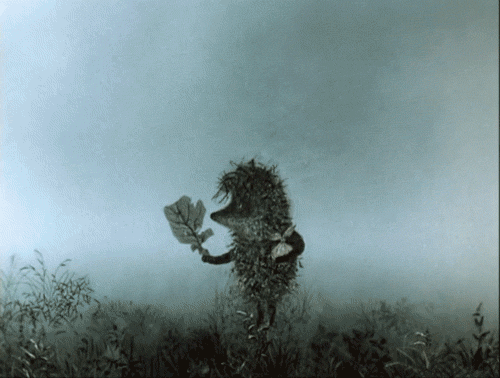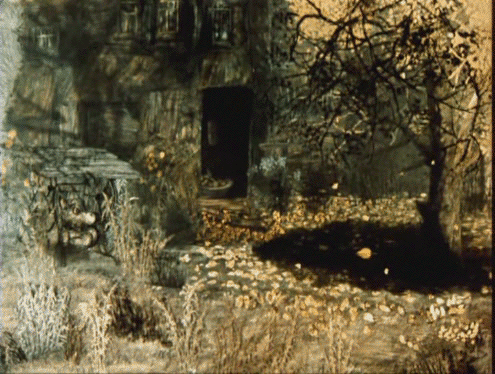| AYYYYYYYYYYYYYYYYYYY |
So now I'm gonna touch on art style. Though I acknowledge the amazing skill that is invested into it, paper cutout animation has never been my cup of tea. I'm usually more into the painstaking drawing frame by frame style. So when I say that Yuriy Norshteyn's animations are aesthetically breathtaking, you know Norshteyn's really passed the mark. The way each piece flowed, how lighting and effects were used to enhance the mood, the cute quirky character designs. Usually, I prefer frame by frame drawn animation because those artists, at least from my experience, have been more attentive to movement accuracy, where each limb goes, how each limb moves, how physics affect them. Yuriy's style has changed my view of paper animation so immensely because it achieves each of those things beautifully. And after seeing the documentary, I get a real idea of how much time and effort is invested into his works.
 |
| I'll just leaf it right here. |
And now to analyze the storytelling.Unfortunately this did not impress me as much. It was far from bad, hell, I'm even willing to say they were above par. But not that far that they deserve such high praise. Hedgehog in the Fog I am willing to be more lenient with, as it was a childrens tale, and children of course, don't give two дерьмо about character development or any of that stuff. But Tale of Tales, hailed to be one of the greatest animated films of all time, not so much.
Overall, it was stunningly beautiful, I think we can all admit that. The themes of youth and childhood loss to war were there clear as crystal, from the suckling baby, to the child in the snow with his apples (symbol of youth parallel to baby suckling? the apples look sorta like boobs. heehee) to the husbands disappearing to fight in the war. However, the main problem I feel was that ultimately, I wasn't sure what had happened. I had to look up a summary to understand what was going on(not an easy find, let me tell you). Apparently, each of the scenes are meant to be out of order to resemble human memories. This is great, but this is a fact, a premise, that should've been somehow established earlier in the film, as subtly as possible if need be. Also, I still have no idea what the wolf was meant to symbolize.
 |
| DOES THIS LOOK UNSURE TO YOU? |
| I remember when I had to play that in grade school |
The pacing however, was a bit problematic. It was slow, and it took ages for them to even introduce the hero, Mr. Snide Piper.
All in all, though pacing took me hostage, beat me to a pulp, and almost killed me slowly and painfully, the art style was my Stockholm Syndrome, and the story, in the case of Krysar, was that little tray of food that the kidnappers slip to me.
| See ya later f**kers |

I can't believe
ReplyDeleteAradia tho
Eyy Squidward? Eyy Squidward? Eyy Squidward?
Delete